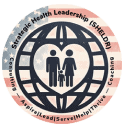Executive Summary: The U.S. doesn’t have a healthcare system—it has a trillion-dollar sick-care machine engineered to manage illness, not produce health. This two-part article is a call to tear it down and rebuild it. Part one outlines the scale of failure, defines Strategic Health Leadership (SHELDR) as the way forward, and shows how to build systems that prevent rather than patch. Part two introduces upstream leadership, Health and Human Services Collaboratives (HHSCs), Integrated Accountable Community Health Systems (IACHS), and artificial intelligence (AI) as tools for structural change. Part two delivers the playbook for local leaders ready to act. This is strategy, not theory. The rebuild starts now.
Table of Contents
Editor’s Note: This article is the first in a two-part series calling out the collapse of the U.S. sick-care machine and making the case for a national upstream reset. Part one exposes the structural failure, frames Strategic Health Leadership (SHELDR) as the only viable path forward. Part two introduces critical solutions like Health and Human Services Collaboratives (HHSCs), Integrated Accountable Community Health Systems (IACHS), and applied artificial intelligence (AI). It’s a manifesto for leaders ready to act—not just admire the problem.
The Problem We Cannot Ignore
The United States does not have a healthcare system. We have a sick-care machine—bloated, reactive, and built to profit off suffering. We spend over $4.5 trillion each year treating disease, yet life expectancy stalls, chronic conditions explode, and preventable deaths keep piling up. This is not just inefficiency—it is a moral failure. Dead last in many measurable categories of performance measures! This is not accidental. It is the result of deliberate design, political cowardice, and a culture that accepts collapse as usual. The time to tear it down is now
Strategic Health Leadership (SHELDR) is not just a concept, but a transformative approach to healthcare. It involves redesigning systems, rewriting incentives, and creating the conditions for health to thrive. SHELDRs do not just manage clinics—they create environments where clinics are often not needed. This approach is the only way forward in our quest to transform the U.S. healthcare system.
Upstream or Collapse
We must stop pretending political preference, tweaks, and glitzy pilot programs will save the USA’s “sick” care system. We need a national realignment focused on producing better health, rather than managing illness. We need a mind shift, too. For example, a hospital CEO convenes housing, transportation, nutrition, and public health partners to redesign care pathways and reduce ER visits by tackling the root causes of unstable housing and seeing the upstream effects.
We need leaders who understand that the path to national strength runs upstream. That is where Strategic Health Leadership (SHELDR) lives. SHELDR is not about better management—it is about bold leadership that shapes policy, reengineers systems, and builds the conditions for communities to thrive before the disease ever strikes. If upstream is where we must go, the first roadblock is the mess we have built below—our fractured, dysfunctional health and human services foundation.
Fix the Fragmented Foundation
The health and healthcare ecosystem —a complex network of various organizations, individuals, and resources that work together to provide medical care and support to patients — in the U.S. is structurally disconnected and operationally fragmented. The healthcare ecosystem must operate as a single, integrated system—with the patient at its center. Doing so ensured efficient and effective delivery of healthcare services. It does not. Providers chase reimbursement codes. Patients get lost in the referral and care coordination process. Agencies operate in silos. Misaligned incentives and national policy inertia stifle local innovators. Moreover, worst of all, the people doing the work—the frontline teams—are buried in paperwork, burned out, and blocked by bureaucracy.
The health and human services (HHS) ecosystem— where prevention, equity, accountability, and dignity are the priorities, not procedures. This health ecosystem spans far beyond clinical care. The HHS impacts health and its various dimensions. The system spans Medicaid, Medicare, public health, SNAP, housing, mental health, schools, food systems, transportation, and more—it was built to serve, but it operates like a broken relay race. Everyone is running, but nobody is handing off the baton.
The system is reactive, siloed, and fraught with friction. It waits for eviction, trauma, or preventable crises before engaging. That is not care—it is cruelty dressed up as a process. Children with asthma suffer in mold-infested housing while clinics prescribe inhalers instead of coordinating with housing authorities.
Patients get lost in referrals, frontline workers drown in bureaucracy, and local innovators get boxed in by misaligned incentives. We do not need more pilots. We need shared purpose, joint accountability, and infrastructure that connects—not divides. That is why we must build Health and Human Services Collaboratives (HHSCs): community-level partnerships with pooled funding, shared data, and distributed leadership that solve the conditions that cause poor health in the first place. Your involvement is crucial in this collaborative effort.
More importantly, we must shift our focus upstream. That means investing in upstream health leadership—leaders who target policy, power, income, education, and the environment. Leaders who do not just treat illness but prevent it through structural change. They do not build more dialysis centers—they fight for access to clean water and anti-hypertensive food. They do not expand ERs—they redesign community safety and trauma response.
The fix is not just functional—it must be foundational. We do not need tweaks. We need a national transformation that puts health, not sickness, at the center of American life. This transformation is not just a dream, it is within our reach.
From MAHA to MAHANSI
This is the heart of the Make America Healthy Again (MAHA) vision: a nation that sees health as a responsibility, not a billing code. MAHA is not nostalgia—it is a national reset. MAHA is a national initiative to pivot from sick care to health creation—embedding healthy habits, environments, and policies into daily life and infrastructure. Upstream leaders (SHELDRs) tackle social and systemic drivers of poor health before the disease starts. They do not yield to the “political paparazzi.” MAHA demands we move away from profit-driven chronic disease management and toward wellbeing as a shared civic goal.
That leads us directly to the need to Make All Americans Healthier as a National Strategic Imperative (MAHANSI). If health is not viewed as core to our national security, economic strength, and global competitiveness, we will continue to collapse under our dysfunction. MAHANSI reframes health from a social or sick care system program to a strategic necessity. In a post-COVID, post-industrial world, thriving populations are our best defense and most significant asset. For example, local, state, or federal funding for community bike lanes, city-wide mental wellness campaigns, and mandatory food labeling, paired with tax incentives for healthy behavior, go a long way toward bending the real cost of healthcare.
That national pivot must be backed by real structure. Not slogans. Not pilots. The right conditions—built by design—make health possible before care is even needed.
Lean more at the SHELDR website: https://sheldr.com/
5 Exciting Strategic Leadership Tips on How to Build Integrated Community Health Systems Now
Part 2 flips the lens to action. It walks through practical, community-level steps any health or human services leader can take to get started now. From launching collaboratives to applying AI as your leadership assistant, this is your strategic how-to. If part one is the indictment and vision, part two is your battle plan. Use both. Tear it down. Build something better. The questions will help you continue the conversation.
20 Wicked and Chronic Problems in the U.S. Healthcare System
- High Healthcare Costs and Affordability: The U.S. faces persistently high healthcare expenditures, straining families and employers. Medical prices and insurance premiums have outpaced wage growth for years, leaving about half of U.S. adults struggling to afford care and one in four delaying or skipping needed treatment due to cost. These rising costs burden patients with medical debt, making health outcomes increasingly tied to one’s financial means.
- Gaps in Insurance Coverage: Despite gains from the Affordable Care Act, millions remain uninsured or underinsured. In 2022, the insured rate peaked at 92.3%, but the expiration of pandemic policies means 8–24 million people are expected to lose Medicaid coverage. Non-expansion of Medicaid in 10 states leaves an estimated 3.5 million low-income adults without coverage. Lapses in coverage lead to untreated conditions and preventable hospitalizations, highlighting the ongoing challenge of achieving universal coverage.
- Health Disparities and Equity Issues: Systemic inequities continue to drive worse outcomes in marginalized communities. For example, minority and low-income populations experienced higher COVID-19 mortality and have disproportionate rates of chronic diseases and maternal deaths. Structural factors, such as a lack of nutritious food, safe housing, and transportation, contribute to these disparities (healthcarecouncil.com). Closing these gaps remains a “wicked problem,” requiring multi-sector solutions to address social determinants of health.
- Chronic Disease Epidemic: The U.S. carries a massive burden of chronic illnesses such as heart disease, diabetes, and obesity. Fully 6 in 10 U.S. adults live with at least one chronic disease, and 4 in 10 have multiple conditions. These diseases account for approximately $4 trillion in annual healthcare spending. Managing and preventing chronic conditions is an enduring challenge, as lifestyle risk factors (poor diet, inactivity, tobacco) remain prevalent.
- Aging Population Pressures: The demographic wave of aging baby boomers is driving an increase in demand for healthcare and long-term care. More Americans are living into their 80s and 90s with multiple comorbidities, straining Medicare and the caregiver workforce. The “Silver Tsunami” of seniors will necessitate a shift in the system’s focus to geriatric care, chronic disease management, and end-of-life services on an unprecedented scale.
- Mental Health and Substance Use Crises: There is a growing mental health crisis and ongoing opioid epidemic in the U.S. Rates of depression and anxiety have climbed (especially among youth), yet access to therapy and psychiatric care remains limited. At the same time, drug overdose deaths have exceeded 100,000 annually for three years in a row. Hospitals and communities face rising needs for behavioral health and addiction treatment services, making mental health a top concern for healthcare CEOsache.org.
- Healthcare Workforce Shortages and Burnout: Hospitals and clinics are struggling with shortages of critical staff – from primary care doctors and psychiatrists to nurses and technicians. Projections show that the U.S. could face a shortage of up to 124,000 physicians by 2034. Likewise, nearly one-third of nurses (over 600,000) report plans to leave their jobs within 5 years, mainly due to stress and burnoutnetsuite.com. Workforce challenges have been the top concern of hospital CEOs for three consecutive years. Burnout rates remain high, fueled by excessive workloads, administrative burdens, and trauma from the COVID-19 pandemic.
- Fragmented Care and Poor Coordination: The U.S. healthcare system is notoriously fragmented, with patients often seeing multiple providers who do not effectively communicate. This fragmentation leads to gaps in care, duplicative tests, and medical errors. Notably, about 80% of serious medical errors involve miscommunication during care transitions between providers. Siloed electronic health records and lack of interoperability exacerbate the problem. Improving care coordination and continuity – especially for patients with complex or chronic conditions – remains an unmet, “wicked” challenge.
- Administrative Burden and Inefficiency: A significant share of U.S. healthcare spending goes to administrative overhead rather than clinical care. Providers face cumbersome billing and insurance procedures – for example, revenue cycle inefficiencies lead to ~15% of hospital revenues going uncollected. Prior authorization and claims denials by insurers have surged (11% of all claims denied in 2022, up 10% from 2021). These bureaucratic hurdles consume clinicians’ time and contribute to burnout. Efforts such as billing simplification and automation are underway, but paperwork and red tape continue to be chronic problems.
- Patient Safety Concerns: Preventable medical errors and hospital-acquired infections continue to harm patients at unacceptable rates. While safety initiatives have made progress, issues like medication errors, surgical complications, and diagnostic mistakes persist. An estimated 7,000–9,000 Americans die from medication errors each year, and about 80% of serious errors involve communication failures, as noted above. Ensuring consistent patient safety and quality of care is an ongoing struggle complicated by system complexity and human factors.
- Suboptimal Patient Experience: Patients frequently report frustration with long wait times, rushed appointments, poor communication, and difficulty navigating the system. The average wait for a new patient appointment in many areas is 26 days. Even basic tasks, such as scheduling, obtaining test results, or getting prescription refills, can be cumbersome. Such issues erode patient satisfaction and trust. Healthcare organizations are increasingly focusing on patient experience as a key quality dimension, offering conveniences such as online scheduling, telehealth, and patient portals to enhance access and engagement.
- High Drug Prices: The U.S. struggles with some of the highest prescription drug costs in the world. Many patients cannot afford life-saving medications due to a lack of pricing controls. Skyrocketing costs of specialty drugs (e.g., biologics, cancer therapies) put treatments out of reach and drive-up insurance premiums. Although recent policies (like allowing Medicare drug price negotiation) aim to temper costs, price transparency and affordability of medications remain critical challenges. High drug prices contribute to medication non-adherence and financial toxicity for patients.
- Cybersecurity Threats: Healthcare has become a prime target for cyberattacks due to the sensitive personal health data and critical systems it involves. Hospitals and insurers suffered over 180 ransomware attacks in 2024, with an average ransom of nearly $900,000. About 80% of such attacks disrupt patient care – downtime of IT systems forces diversions and can delay urgent treatments, sometimes with deadly consequences. The cost of a healthcare data breach now averages $10 million. Strengthening cybersecurity defenses and data protection is an urgent, ongoing need as digital health expands.
- Telehealth Sustainability and Reach: Telehealth usage surged 78-fold at the start of COVID-19, but its future is uncertain. With the pandemic emergency over, regulatory flexibilities are expiring. Utilization has dropped and remains concentrated in behavioral health services. Unresolved questions about reimbursement, licensure across state lines, and prescribing controlled substances via telemedicine have created doubts about telehealth’s future. Additionally, many seniors and rural residents face barriers related to technology or broadband access. The challenge is making virtual care a durable component of healthcare delivery – reaching underserved populations without sacrificing quality or continuity of care.
- Rapid Regulatory Changes: The healthcare sector is heavily regulated, and the pace of change has accelerated. New rules on price transparency, information blocking, telehealth, value-based payments, and more require constant adaptation. Keeping up with evolving regulations strains the administrative capacity of providers. For instance, hospitals must comply with price transparency mandates (posting complex pricing data) and surprise billing protections but face difficulties and resource constraints in doing so. Regulatory compliance, while necessary for accountability and patient rights, adds to the burden on health organizations already stretched thin.
- Transition to Value-Based Care: Moving away from fee-for-service toward value-based payment models is a long-term goal aimed at improving quality and lowering costs. However, this shift has proven challenging. Providers juggle numerous value-based programs (ACOs, bundled payments, chronic care models, etc.), each with distinct metrics and documentation requirements. The administrative burden of reporting quality and outcomes is substantial, often diverting time away from patient care. While Medicare aims to have most beneficiaries in value-based arrangements by 2030, many hospitals and clinicians feel unprepared and worry about financial risk. The path to value-based care will require simplified models and better support for providers to succeed.
- Disruption from New Entrants: Traditional healthcare providers face growing competition from retail and technology giants entering the care delivery market. Companies like Amazon, CVS, Walgreens, and Walmart are rapidly expanding into primary care, clinics, and home health. Between 2014 and 2023, the number of urgent care clinics doubled to 14,000, generating $35 billion in revenue. These alternative care sites attract patients with convenience and lower costs. While competition can spur innovation, it also pressures hospitals – especially in less profitable services – and fragments the market where patients seek care. Incumbent health systems must adapt business models and consumer experience in response to this disruption.
- Public Health Infrastructure Gaps: The COVID-19 pandemic exposed underinvestment in public health capacity. Issues included inadequate disease surveillance systems, supply chain failures (e.g., PPE, testing), and workforce shortages in public health agencies. Even after the pandemic, funding for public health and preparedness remains inconsistent. Challenges like managing future pandemics, combating antimicrobial resistance, and responding to climate-related health threats will test a public health system that is still rebuilding. Ensuring a robust public health infrastructure and emergency preparedness is a persistent challenge amid budget constraints and the boom-bust cycle of attention to public health.
- Healthcare Misinformation and Distrust: An “infodemic” of medical misinformation (especially online) has eroded public trust in health authorities. False claims about vaccines, treatments, and diseases spread rapidly on social media, contributing to vaccine hesitancy and resistance to public health measures. This fuels worse health outcomes – for instance, misinformation led to lower COVID-19 vaccination in some communities and preventable deaths. Healthcare leaders now face the challenge of effectively countering misinformation and rebuilding trust. Distrust also stems from historical injustices and current inequities, requiring healthcare organizations to engage with communities transparently and respectfully to regain their confidence.
- Complexity of Healthcare Delivery: The USA healthcare system itself is a complex chronic problem. Patients navigate a complex landscape of payers, providers, and protocols. Providers must navigate time consuming reimbursement rules and quality program rules. Multi-payer structure creates high administrative costs and fragmentation. Efforts to simplify – whether through unified financing, interoperable records, or care integration – face political and logistical hurdles. This complexity renders the system less efficient and more prone to errors. Tackling it involves aligning incentives and policies to make healthcare more seamless for both patients and caregivers – truly a “wicked” multi-faceted challenge.
#MakeAmericaHealthyAgain
#StrategicHealthLeadership
#TearDownSickCare
#BuildHealthNotHospitals
#AIforHealthJustice




